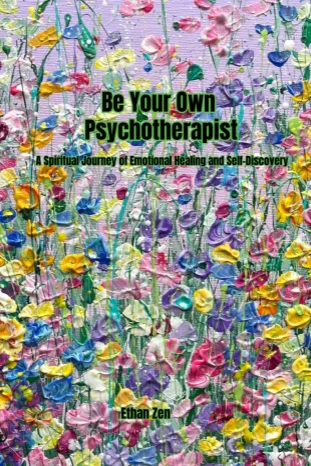How Can We Keep All Relationships at Their Best?

On the blue couch in the counseling room, 32-year-old Ms. Lin brought up her office colleague for the third time:
“She always places her water cup next to the documents, and her hand gestures while speaking are dizzying…”
As the aroma of coffee drifted between us, I suddenly recalled another client from last week who had complained about how his wife cut vegetables “the wrong way.”
These seemingly trivial criticisms are like willow catkins in spring—light and harmless on the surface, yet quietly build invisible walls in our relationships.
The Eye That Judges Others Often Hides the Unseen Self
When we repeatedly scrutinize others’ “flaws” through a magnifying glass, what reflects back is, in truth, our own image.
In psychology, this is known as the projection effect—like a Roman silver mirror, it casts the parts of ourselves we struggle to accept onto others.
Ms. Lin, who disliked her colleague’s placement of a water cup, later admitted that she was frequently scolded by her mother as a child for keeping her desk messy.
The husband who was irritated by his wife’s way of chopping vegetables finally acknowledged that he couldn’t tolerate life veering off his mental blueprint.
This kind of psychological defense is like a self-directed play in the theater of the mind. We project the parts of ourselves we deem “imperfect” onto others, trying to gain a fleeting sense of superiority by rejecting them.
But as in the Greek myth of Narcissus, who fell in love with his own reflection in the water, indulging too deeply in this game distances us from the real world.
The Perfectionist’s Dilemma: Measuring the World with a Ruler
In everyday life, those who strive for perfection often live the most uneasily.
The pain of perfectionists lies in treating life as a blueprint in need of constant correction.
When strict standards shift from self-discipline to judging others, relationships become perpetual exam rooms filled with red pens.
Neuroscience research shows that chronic criticism activates the brain’s threat-alert system, putting the body in a state of constant stress.
True growth is not about reshaping the world into your ideal form, but about learning to appreciate its asymmetrical branches.
Like the Japanese art of kintsugi, which repairs broken pottery with gold, when we accept the natural patterns of life, the very “flaws” that once hurt us begin to radiate a unique light.
Breaking the Cycle: Replacing Judgment with Understanding
Change can begin with a simple awareness practice:
When dissatisfaction arises, pause for three seconds and watch the thought pass like a drifting cloud.
Try replacing “Why does he always…” with “I feel…”
This shift in perspective opens a new window in the mind.
Keeping a regular emotion journal may surprise you—many of our criticisms of others echo unmet needs within ourselves.
The key to genuine connection lies in cultivating firmness without hostility and affection without entanglement.
Like a gardener who knows how to prune branches yet still admires wildflowers, we can find balance between upholding principles and embracing imperfections.
When we stop seeking pieces of ourselves in others, we begin to see the unique grain of each soul.
So next time your colleague’s water cup placement irritates you, make a cup of tea and quietly observe your emotional ripple.
When a family member’s habit makes you frown, try recalling a moment when that very trait brought warmth.
Life is not a precision instrument. The so-called “discordant noises” may be the very notes that complete the symphony of existence.
And when we learn to gently befriend our own imperfections, the “thorns” in others soften, like willows in the spring breeze, swaying tenderly in the light of understanding.
Today’s Book Recommendation: Be Your Own Psychotherapist
Emotional fluctuations are often dismissed as trivial, yet they hold deep sway over our physical well-being and inner clarity. Be Your Own Psychotherapist invites us to become compassionate observers of our own minds—to notice, understand, and gently tend to the waves of emotion that arise. Rather than seeking control, the book guides us toward harmony, offering tools to cultivate a freer, more joyful experience of life from within. Check it out.








